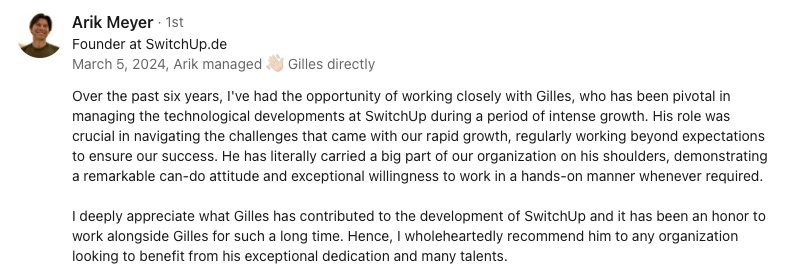Abstract:
The article highlights augmented reality (AR) as a transformative tool in promoting sustainable innovation, particularly in Europe where startups are utilizing AR to enhance eco-friendly practices like manufacturing, waste reduction, and the circular economy. AR enables businesses to visualize product lifecycles, allowing for resource-efficient decisions, and supports virtual prototyping to reduce material waste. The technology also aids in real-time resource monitoring, helping startups quickly address inefficiencies and improve sustainability. Case studies of companies like Reflekt GmbH and Augmenta illustrate AR's role in reducing material waste and enhancing precision. Moreover, AR fosters consumer engagement by providing interactive product information, boosting transparency, and encouraging eco-friendly consumer choices. Despite challenges like high development costs and regulatory compliance, startups can leverage funding opportunities from programs like Horizon Europe to advance AR-driven sustainability. Emerging trends in AR offer new opportunities for smarter resource management and sustainable business models, positioning AR as a key player in the green digital transformation.
Augmented reality (AR) is revolutionizing sustainable innovation, seamlessly merging digital technology with eco-friendly practices. In Europe, startups are leveraging AR to redesign manufacturing processes, minimize waste, and enhance the circular economy. This isn't just about showcasing technology; it's about achieving tangible benefits, such as conserving materials and optimizing resource use. With AR, businesses can visualize a product's entire lifecycle before committing resources, enabling smarter, greener decisions. Let's explore how AR is transforming sustainable practices today and paving the way for a more sustainable future.
AR as a Catalyst for Sustainable Innovation
In today's digital landscape, AR is emerging as a pivotal force in promoting sustainable innovation. Particularly in Europe, startups are at the forefront. AR transcends being a mere tool; it's reshaping production methods and bolstering recycling and reuse efforts. This section examines how AR assists in waste reduction and reimagines economic models with a focus on sustainability.
Simulating Sustainable Practices
AR is altering business perspectives on sustainability in production and manufacturing. Startups utilize AR to simulate processes, identifying waste before material usage. Consider a startup employing AR to visualize a product's lifecycle. The technology pinpoints areas for improvement, such as material usage and energy consumption. For instance, a digital company in Berlin successfully used AR to significantly cut waste. This proactive approach enhances efficiency and fosters continuous improvement.
Visualizing waste streams through AR enables companies to anticipate resource wastage and improve efficiency. This visualization aids in making informed, sustainable decisions. Reports highlight how AR visualization directly leads to process optimization. By leveraging AR insights, companies not only reduce waste but also enhance sustainability throughout their value chain.
AR's impact extends beyond current processes into product design. Virtual prototyping with AR reduces the need for physical resources. By creating digital versions of products, companies can test and refine designs without physical materials. This approach aligns with the circular economy, minimizing waste and optimizing resources. Case studies demonstrate how virtual prototyping decreases material waste and supports sustainable designs. As AR becomes more integrated, its role in fostering a circular economy becomes increasingly evident.
Promoting Circular Economy
The era of endless resource consumption is waning, with AR spearheading the shift toward sustainable economic practices. By enabling virtual product testing, AR helps companies conserve resources and reduce the need for physical prototypes. Imagine a designer adjusting a virtual product model—each modification enhances sustainability without using real materials. This conserves resources and accelerates the design process, facilitating quicker improvements.
Efficient resource use is paramount, and AR facilitates rapid iteration of virtual prototypes. Companies can swiftly refine designs, decreasing production time and material waste. This speed and precision, enabled by AR, are crucial for businesses transitioning to sustainable models. Success stories, such as Reflekt GmbH, illustrate how AR minimizes material waste through virtual prototypes and strategic planning. These examples underscore AR as a vital tool in sustainable innovation, reducing carbon footprints and enhancing resource efficiency.
Enhancing Resource Efficiency with AR
AR is transforming how startups achieve resource efficiency, making it an indispensable tool in this transformative journey. In Europe, where environmental consciousness is high, AR aids startups in discovering innovative ways to better monitor and manage resources.
Real-time Resource Monitoring: AR offers a dynamic method for startups to visualize and track resource use in real-time, leading to swift adjustments that conserve resources. For instance, a tech startup using AR to monitor energy consumption can identify inefficiencies as they occur, allowing for timely interventions. In Berlin, a company successfully used AR to optimize energy management, significantly reducing unnecessary usage. Real-time insights from AR not only facilitate quick decision-making but also position startups as leaders in sustainable resource management.
Immediate Changes and Waste Reduction: AR's capability to swiftly identify inefficiencies enables startups to make immediate changes, reducing waste. The financial and environmental benefits of these adjustments are substantial. For example, a startup employing AR to detect excessive energy use can optimize systems, lower energy costs, and reduce its carbon footprint. This data-driven approach eliminates inefficiencies, resulting in cost savings and enhanced sustainability.
Optimizing resource use with AR leads to impressive cost savings and environmental benefits. By maximizing efficiency, companies not only improve their finances but also contribute positively to the planet. Startups integrating AR into operations often experience reduced resource use and waste. These efficiencies are highlighted in real-world cases, illustrating AR's crucial role in sustainable practices. The benefits for both economy and ecology create a compelling case for businesses aiming for sustainable innovation.
Case Studies of Successful Implementations
Real-world examples illustrate how European startups use AR to enhance resource efficiency and sustainability. These case studies provide concrete evidence of AR's transformative potential.
Reflekt GmbH: This German company utilizes AR for maintenance operations, conserving resources and improving precision. This method reduces material waste and enhances reliability. In my tech career, I've observed similar practices where AR minimizes human error, saving resources and enhancing operations.
Augmenta: A UK startup, Augmenta highlights AR's potential in component visualization, preventing material waste and improving accuracy. By using AR, they visualize components before manufacturing, reducing misalignment and waste. This precision underscores AR's ability to refine processes and ensure optimal material use. Such technological applications are invaluable for achieving both precision and sustainability.
These implementations demonstrate AR's effectiveness across various scenarios, driving resource efficiency and sustainability. As AR gains momentum, it continues to transform operations, minimizing environmental impacts. The future holds more potential for AR's influence on consumer engagement, underscoring its role in sustainable business practices.
Supporting Sustainable Consumer Engagement
AR is revolutionizing how consumers interact with products, offering transparency and insights into the sustainability of their purchases. This transparency empowers consumers to make informed decisions aligned with their eco-friendly values.
Interactive Product Information
AR provides detailed insights into products' origins and environmental impacts, enhancing transparency. This transparency is vital for educating consumers about sustainability. For instance, companies like IKEA and Zara use AR to let users explore not only how an item fits in their space but also its sustainability credentials. This interactive approach makes sustainable options accessible and engaging for consumers. In Berlin, local startups have used AR to translate complex environmental data into easily understandable insights for consumers.
AR extends beyond visualization, serving as an educational tool that encourages eco-friendly choices. These educational efforts build consumer trust by empowering users with knowledge for informed purchases. For example, The Honest Company's use of AR to display product composition and eco-benefits illustrates how AR can transform consumer education into trust-building. These immersive experiences are crucial in forming a more sustainability-aware consumer base.
AR-driven Immersive Experiences
AR's ability to craft engaging, tangible sustainability stories is a game-changer for consumer education. AR storytelling makes the environmental impacts of consumption relatable and understandable for everyday consumers. Imagine a virtual tour through a product's lifecycle, from sourcing to disposal, brought to life through AR. I recall discussions in Berlin about using AR for this storytelling, presenting impacts in an interactive format.
Such experiences are memorable and influential, promoting sustainable choices. This emotional connection, shaped by memorable AR experiences, positions brands not just as sellers but as educators and leaders in sustainability. The emotional impact of AR ensures messages resonate deeply, encouraging eco-friendly consumer behavior. As consumers engage with these experiences, they begin associating innovation and sustainability with the offering brands, enhancing loyalty and perception.
Brands utilizing AR to highlight sustainability are perceived as forward-thinking and responsible, attracting consumers who value eco-consciousness. These brands stand out in the market, drawing in consumers keen on sustainability solutions. As seen with several European companies, leveraging AR for sustainability boosts a brand's appeal and aligns with growing consumer demand for environmental responsibility. Next, we'll explore the regulatory landscape affecting AR's sustainable applications.
Navigating AR's Regulatory Landscape
Integrating AR into sustainable practices requires navigating both innovation and regulation. In Europe, compliance is not just a hurdle; it's a catalyst for innovation. EU regulations, such as those under the Green Deal, impose strict environmental standards for AR projects. These regulations are not merely about legal compliance but also present an opportunity for startups to align with sustainability goals. In Berlin, I've witnessed how these standards shape tech adoption, ensuring startups incorporate compliance into their strategies from the outset.
Startups venturing into AR must integrate these regulatory considerations into their strategies. This is crucial for success, as neglecting compliance can derail promising projects. For instance, understanding GDPR implications is vital when AR applications handle personal data, influencing how startups design their systems. My tech experience indicates that a proactive approach to regulation—viewing it as a catalyst rather than a constraint—ensures smoother execution and market acceptance.
Adhering to these regulations is essential for leading sustainable innovation in AR. It's not merely about following the rules; it's about establishing a foundation for sustainable growth. Companies like Varjo and Holo-Light exemplify this by embedding compliance into their operations, securing market positions and building trust with stakeholders. Embracing these guidelines and integrating them into the innovation process is the way to harness AR's potential sustainably.
Funding Opportunities for AR-driven Sustainability
In the realm of AR, European Union programs like Horizon Europe offer significant funding for sustainable tech innovation. These initiatives present a golden opportunity for startups to secure the capital needed for AR projects. In Berlin, I've observed these programs enabling startups to pursue impactful projects without financial constraints. Horizon Europe funding is not just financial support; it's about empowering ideas that align with broader sustainability goals.
Beyond funding, regional programs like the Digital Europe Programme and national initiatives also support AR's sustainable applications. These incentives include grants and tax reductions, providing financial support for startups to push AR tech boundaries. In my experience, leveraging these opportunities can accelerate sustainable growth, allowing startups to scale operations while maintaining eco-friendly commitments.
By tapping into these funding and incentive programs, startups can enhance their path to sustainable innovation. This strategic advantage not only aids in developing impactful AR solutions but also positions companies at the forefront of the green digital transformation. As we explore AR's role in sustainability, aligning financial strategies with regulatory frameworks becomes increasingly important, paving the way for new discoveries in this evolving sector.
Challenges and Opportunities
Integrating AR into sustainable practices presents both challenges and opportunities for startups. While AR's potential is immense, the journey to realizing its full potential involves overcoming obstacles that require innovative solutions.
Technical and Financial Challenges
High development costs and hardware limitations pose challenges for AR startups pursuing sustainable innovation. Developing advanced AR applications often demands expensive resources and high-end hardware, which can be daunting for new companies. I've encountered a Berlin startup grappling with the high costs of developing AR technology that aligns with their eco-friendly objectives. The challenge isn't just the cost of cutting-edge hardware but also its limited availability, which can impede innovation. Strategic partnerships with tech giants or exploring cloud-based solutions can help overcome these hardware constraints without compromising quality.
Financial constraints, particularly limited access to investment, further complicate the path for AR startups. Many investors perceive AR as high-risk, making it challenging for startups to secure capital. However, strategic funding solutions, such as leveraging EU grants and funding programs, offer viable paths. In Berlin, I've seen startups navigate financial barriers by tapping into EU grants for sustainable tech ventures. This approach not only alleviates financial strain but also aligns startups with broader environmental goals, attracting sustainability-focused investors.
Overcoming these challenges is crucial for startups to effectively leverage AR technology for sustainable practices. By prioritizing partnerships, seeking strategic funding, and implementing AR solutions gradually, startups can surmount initial hurdles. My experience shows that a gradual, well-planned approach often helps overcome technical and financial obstacles in tech. Looking ahead, emerging trends in AR promise new opportunities for sustainable innovation.
Emerging Trends and Future Opportunities
Emerging trends in AR technology hold the potential to open new avenues for sustainability, including smarter energy management. These trends align with the ambitions of forward-thinking startups eager to blend sustainability with technological advancement. For instance, AR-driven energy management innovations are aiding in monitoring and conserving resources more efficiently. In Berlin, startups are leveraging these trends to optimize energy use and reduce their operational footprints. This not only cuts costs but also aligns with the emphasis on resource conservation.
Startups can capitalize on these promising trends by aligning strategies with future technological advancements. This proactive alignment paves the way for capturing future opportunities and staying ahead in the competitive market. In my tech leadership experience, those embracing and anticipating technological shifts always gained an edge. Leveraging new AR capabilities allows startups to innovate sustainably while meeting eco-conscious consumer demands.
Continued innovation in AR holds significant potential for developing sustainable business models. As AR technology evolves, its applications in sustainability are expected to expand, driving more efficient and cleaner industrial processes. The landscape is ripe for innovation, and startups harnessing this potential can lead the next wave of green tech. My tech journey indicates that embracing ongoing innovation is crucial for long-term success. AR is set to play a crucial role in this evolution, offering exciting prospects for sustainable growth and transformation across industries.
You might be interested by these articles:
- Holographic Collaboration Tools
- Augmenting Reality in the Workplace
- Transforming Work with AR Technology





